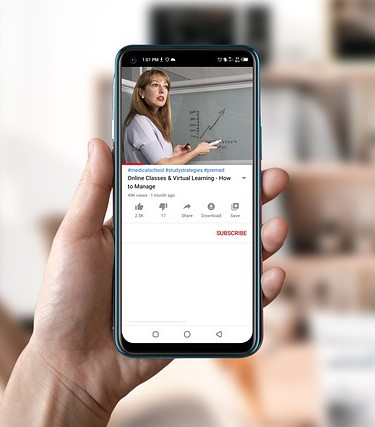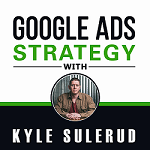My team and I have identified 12 elements that make up a successful YouTube ad. Now, a successful ad isn’t going to have all 12 of these elements, but these are the building blocks. Thinking about your ad in terms of these elements will help guide your messaging and make it really easy to produce winning ads.
These 12 elements are specific to ads for information products and they won’t necessarily apply to ads for e-commerce, software, gaming, or anything else.
Let’s take a look at the first element – The Hook.
Today’s video is focusing on the “Teach Something” element.

Teaching something in your ads is a way to demonstrate your expertise and build trust. You’re sharing useful information, facts, stats, how-to’s, secrets, anything thing that will be relevant to the viewer and to what you will ultimately be able to help them with. You can teach something that naturally leads the viewer into wanting to learn more from you. You’re showing people you can help them by actually helping them.
*I don’t necessarily support or endorse these ads
Example 1
“This is the typical learning curve of guitar. You have phase 1, which is exhilarating but can be slow and frustrating. You have phase 2, which a sort of plateau. It’s got some occasional spikes of breakthroughs, but of course, some guitar ruts as well in it. And then phase three – where you play effortlessly and intuitively.”
In that ad, he is teaching a big idea or a framework. It’s not necessarily anything groundbreaking, but it is something interesting and a way for viewers to put themselves within that framework, which will lead to the rest of what he shares in the ad.
Example 2
“But there’s a hidden industry that is currently $129 billion/year and Forbes just predicted it’s going to $1 billion/day in the next five years. Hey, it’s Dean…”
In that ad, as you can see, he’s teaching about an industry or an opportunity. Again, nothing groundbreaking, but if you’re someone who is not aware of the industry or opportunity he’s talking about, now you’ve learned something new. And now, he’s positioned you to be more receptive to the rest of what he shares in the ad.
Example 3
“Every time a guy approaches me, one of three scenarios plays out. Scenario #1 – He talks to me without ever making a move or escalating. In that case, he’ll always be doomed to the friend zone. I’m not going to see him sexually. Scenario #2 – We talk for a while but when he tries to take it to the next level, he gets rejected immediately and comes off as a creep. Scenario #3 – He ignites instant chemistry, then when he makes a move, the only thing us girls can think of is, “Um, YES! Please!” So what differentiates that third scenario from the first two? It’s not looks (promise), status, height, or money, and definitely not luck. Even male dating coaches chalk it up to a numbers game. It’s totally not. I can’t blame them though. Girls’ brains are wired to understand this stuff, while guys’ brains are just not. The truth is every girl knows there’s one thing that makes all the difference after the approach – your flirting skills. If you’re not experiencing scenario #3 regularly, then you’re not flirting in specific ways women are hard-wired to respond to.”
This ad is a little longer, but it goes a lot deeper into teaching something that the viewer would really want to learn about. As you can see, she went pretty deep into those three scenarios and she teased the answer for a little while, and then actually gave us the answer. She gave us the information that the problem is with the flirting skills. Obviously, that begs the next question – “How do I improve my flirting skills?” and that’s the thing she’s going to offer to help with. She did teach quite a lot in that section of the ad. She demonstrated her expertise and even built some trust in telling you what the problem is.
Example 4
“Your brain is like a supercomputer and your self-talk is a program it will run. If you tell yourself you’re not good at remembering names, you will not remember the name of the next person you meet because you programed your supercomputer not to.”
I like that section because he’s teaching some really cool, helpful information. It may even be something that I’ve heard or thought about before, but now he’s teaching it to me again and that piques my interest in this moment. I want to keep listening to see what else he has to say and what else he might have to offer me.
Example 5
“‘I need 7-8 hours of sleep.’ That’s a lie! Not true. So that’s one of the biggest lies in all of sleep. There’s a couple of reasons why. So first of all, the math doesn’t work. When we looked at overall sleep cycles, the average sleep cycle was 90 minutes. The average person has five of those. 5 X 90 is 450 minutes or 7.5hrs so right there, we know that doesn’t work. But it’s really interesting. If you sleep for the right time for your chronotype, it turns out you actually need less sleep. And if you sleep at a consistent level in terms of going to bed and waking up at the same time, you actually need less sleep.”
If you’re someone who wants to optimize their sleep, you’re probably going to keep listening to this guy even if you didn’t understand all the numbers and words he threw at you. He did a really good job of demonstrating his authority. I probably would’ve dumbed it down a little more, so he’s a little more accessible to more people. But, nevertheless, this is a successful ad.
These are the examples I have for you that demonstrate the “Teach Something” element.
Stay tuned for the rest of the elements that make up winning YouTube Ads.
